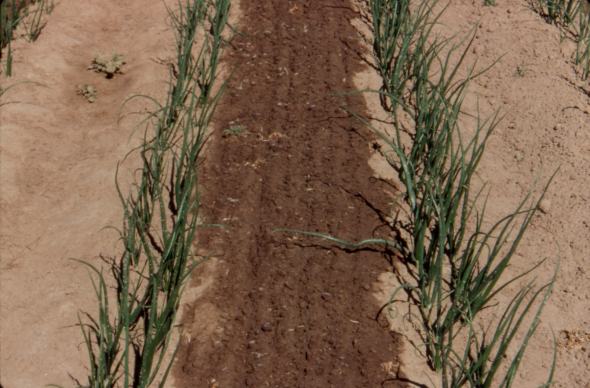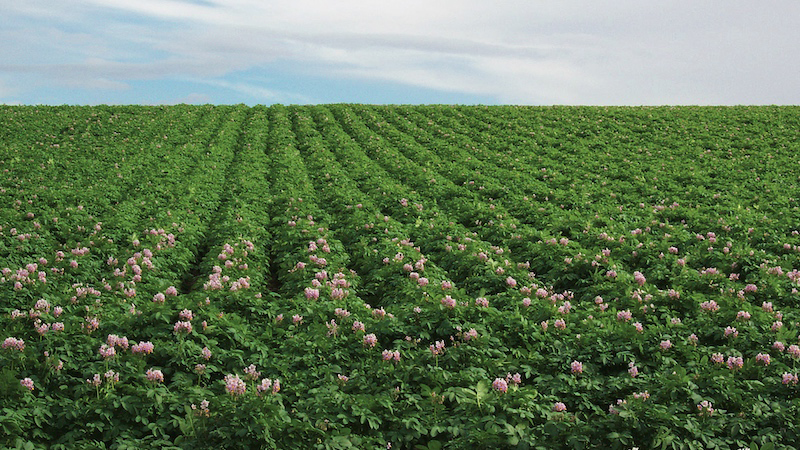Optimal Irrigation Criteria For Drip Irrigated Onions
Editor’s Note: This article was contributed by Clinton C. Shock, Jose Maria Pinto, Erik B.G. Feibert, and Candace B. Shock, Oregon State University Malheur Experiment Station (www.cropinto.com).
Drip irrigation has permitted growers to apply water to fields with greater precision. However, the industry is still in the process of determining how the plant population of a crop changes its irrigation needs.

Clint Shock
Photo credit: Candace Shock
To help answer this question, research at Oregon State University’s Malheur Experiment Station considered the effect on onions. Onion yield and grade is sensitive to the soil water content, which can be measured as soil water tension (SWT). Different plant populations might require different SWTs.
In the semiarid region of the station, the ideal SWT for initiating irrigations for drip irrigated onion is close to 20 centibars (cb) for plant populations of 120,000 plants per acre. In other onion production areas, especially overseas, onions are grown at higher plant populations to produce smaller bulbs for market.
In 2013 and 2014, Vaquero and Swale onion varieties were grown at the station at 120,000 and 450,000 plants per acre. Four SWTs were tested: 10, 20, 30 or 50 cb. Ten centibars keeps the onions the wettest; at 50 cb they are the driest. The experiments were randomized complete blocks with six replicates. Irrigation was automatically controlled in each plot to start when the SWT measured in that plot reached the criteria.
Treatment differences in onion yield and grade were compared using statistical methods. The following conclusions reflect averages for the two varieties.
Yield Differences

Drip irrigation can be managed to precisely match an onion crop’s water needs.
Photo credit: Clint Shock
Yields in 2013 were higher than in 2014. However, many trends were the same in both years. Total marketable yields for the 50 cb treatment were lower than the other three treatments for both plant populations. For both years, the higher plant population of 450,000 plants per acre had a greater marketable yield than the 120,000 density.
There was a significant difference between the two populations in both the marketable yield of the largest bulbs (more than 4 inches in diameter) and the smallest bulbs (under 3 inches in diameter). Since small bulbs are marketable overseas, the choice of plant population should depend in part on the market demand for either large or small onions.
For the 120,000 plants per acre population, in 2014 the marketable yields for the irrigation treatments did not differ significantly. In 2013, the 10 and 20 cb treatments had significantly higher marketable yields.
For the 450,000 plants per acre population, in 2014 the 20 and 30 cb treatments had significantly greater marketable yields than the other treatments. In 2013, both the 10 and 20 cb treatments had significantly higher yields than the 30 and 50 cb acres.
Total rot as a percentage of the yield indicates the storability of the onions. For this study, the percentage of rot was calculated after the onions had been stored.
In 2014, the 10 cb treatment had 11.4% rot for the 120,000 plants per acre population and 28.1% for the 450,000 plants per acre population. In 2013, the 450,000 plants per acre population had 5.9% and 6.7% rot for the 10 cb and 20 cb irrigation criteria respectively. The difference between years was probably due to rain events that kept the whole field wet for longer. Fewer onions rotted with the 30 cb irrigation criterion.
Decomposition at the wettest irrigation criteria would not be as great for the producer if the onions were sold directly out of the field, but consumers could lose a substantial part of the onions they purchased. In a really dry environment, the irrigation criterion for a plant population of 450,000 plants per acre could be close to 20 cb, but an irrigation criterion of 30 cb would be better to minimize rot.









